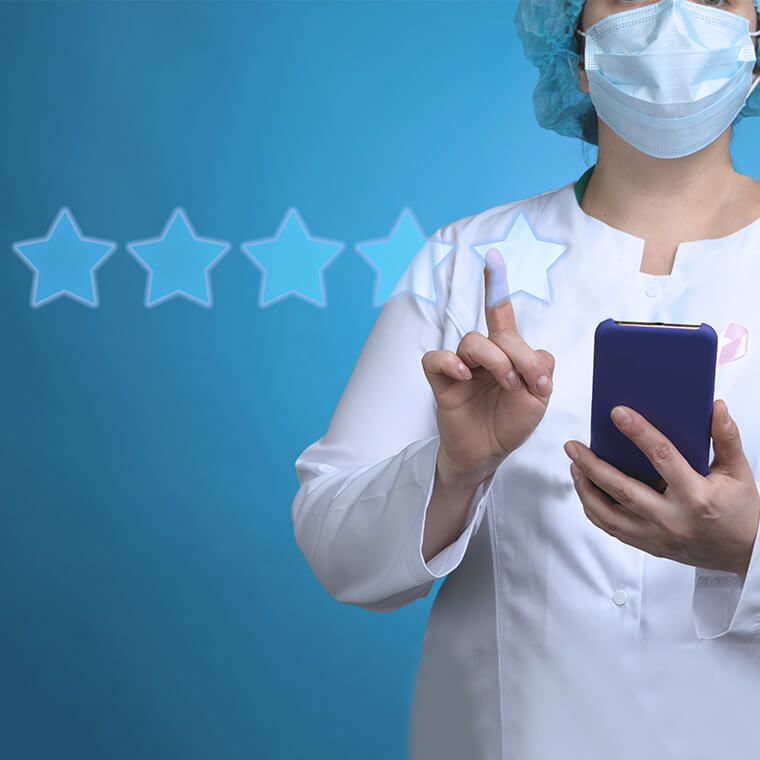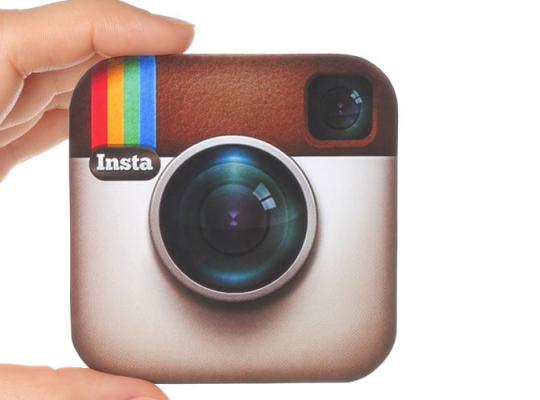Ends in
ends in 127 Days

ends in 127 Days

ends 11 July
Navigating Patient Expectations: Setting Realistic Goals for Treatment

As a dentist, ensuring patient satisfaction and successful treatment outcomes requires more than just technical proficiency. It demands a thorough understanding of patient expectations and effective management of treatment goals. Discover how modern treatment planning software and practice management tools can empower dental professionals to navigate patient expectations, set realistic treatment goals, and enhance overall patient care.
Factors Impacting the Patient Experience

Dentists require an understanding of patient expectations to deliver exceptional care. These expectations are shaped by many factors, including past dental experiences, cultural influences, individual desires, and information gathered from media and social networks. To navigate these expectations successfully, it's vital to develop a comprehensive understanding of what patients anticipate from their dental care experience.
1. Previous Encounters with Dental Care
A patient’s prior experiences with dental care play a significant role in shaping their expectations. Positive encounters can foster trust and optimism, setting a high benchmark for future visits. Those who have had smooth, pain-free treatments and empathetic care are likely to approach new procedures with confidence.
On the other hand, negative past experiences, such as unresolved pain or poor communication, can lead to anxiety and skepticism. They might enter your practice with apprehension or reluctance, affecting their openness to treatment and overall satisfaction. Understanding and addressing these past experiences is essential for creating a tailored approach that aligns with each patient’s unique needs and concerns.
2. Media Portrayals and Social Networks
Media and social networks have an undeniable impact on expectations. Patients often develop preconceived notions about dental treatments based on what they see in advertisements, online reviews, or social media posts.
For example, the idealized portrayals of “perfect” smiles or exaggerated claims about rapid results can set unrealistic expectations. Dentists who are aware of these media influences can manage and set patient expectations with clinical realities. Engaging in open conversations about their media-driven perceptions and clarifying any misconceptions can help bridge the gap between these idealized images and actual outcomes.
3. Online Reviews and Testimonials

The rise of online reviews and patient testimonials has significantly influenced patient expectations and decision-making. According to a 2020 study by Software Advice, 71% of patients use online reviews to evaluate healthcare providers. Fast-forward to post-Covid 2024, and this statistic has skyrocketed 94%!
Positive reviews can really enhance your practice's reputation, drawing in new patients who are looking for high-quality care based on those endorsements. On the flip side, negative reviews can create doubt and hesitation, making potential patients more cautious about choosing your practice. That’s why it’s important to actively manage your online presence—encourage happy patients to share their positive experiences and address any negative feedback in a constructive and transparent manner.
4. Cultural and Societal Influences
Cultural and societal factors play a major role in shaping patient expectations. Different cultures have unique attitudes toward dental care, influenced by their traditions, beliefs, and social norms. Think about this, some societies might emphasize cosmetic dentistry, while others might focus more on preventive care.
Societal trends, like the growing emphasis on aesthetics and the influence of celebrity endorsements, also affect how patients view dental treatments. By understanding these cultural and societal influences, you can approach patient care with greater sensitivity and tailor treatment plans to align with their values and expectations.
5. Personal Health Beliefs and Prior Knowledge
A patient’s personal health beliefs and prior knowledge about dental care can significantly shape their expectations. If someone has taken the time to research dental procedures or holds strong opinions about healthcare, they're likely to have specific expectations and questions.
For example, patients who are familiar with the latest advancements in dental technology might expect cutting-edge treatments or high-tech solutions. On the other hand, those with limited knowledge might have unrealistic expectations or misunderstandings about what’s possible. By providing clear and accurate information and addressing any gaps in their knowledge, you can help align their expectations with the realities of dental care.
How Platinum Care Dental cut 25% manual front desk workload with Adit Lite Got big front desk needs but a small software budget? Adit Lite may be your solution! Platinum Care Dental replaced Opera DDS and World Pay with Adit Lite. With digital forms that auto-upload...
Schedule a DemoHow to Meet Dental Patient Expectations

Meeting dental patient expectations involves more than just providing excellent care; it requires creating a positive, collaborative experience from start to finish. By focusing on patient-centered care, customizing treatment plans, and ensuring clear communication, you can significantly enhance patient satisfaction. Here’s how to align your practice with patient expectations effectively:
1. Focus on Patient-Centric Care
For today's dental providers, focusing on patient-centered care is more important than ever. This approach means taking into account each patient’s preferences, values, and unique situation throughout their treatment. It creates a collaborative atmosphere where patients feel truly valued and understood. By making patients active participants in their care and decision-making, you can greatly improve their overall experience and strengthen their trust in your practice.
2. Personalized Treatment Plans
Tailoring treatment plans to each patient’s unique needs is a cornerstone of patient-centered care. It starts with truly listening to patients and engaging in open dialogue to grasp their goals and concerns. Incorporating feedback from digital tools and patient surveys can further fine-tune these plans, making sure they are in harmony with what each patient hopes to achieve.
This approach not only enhances patient satisfaction but also fosters a more collaborative and trusting relationship between the patient and the care team. As your dental office refines its methods, it can continue to adapt, ensuring that each treatment plan is as personalized and effective as possible.
3. Building Trust and Rapport
Building strong relationships with patients is essential for managing expectations. Transparency about what can and cannot be achieved through treatment helps patients develop realistic expectations and trust in their dental care provider.
Honest discussions about potential outcomes, risks, and limitations are crucial. Regular follow-ups and updates maintain this trust, keeping patients confident in their care and engaged throughout their treatment journey.
4. Effective Communication Strategies

Clear communication is essential for making sure patient goals match clinical outcomes. It’s important to use straightforward, easy-to-understand language and to incorporate visual aids to help explain treatment options and anticipated results.
Digital tools, such as charts, diagrams, and simulations, can make complex information more digestible. For example, 3D imaging and treatment simulations offer patients a clear picture of what to expect, making it easier for them to grasp their treatment journey. By showing patients a visual representation of potential outcomes, you help them set realistic expectations and feel more confident about their decisions. This approach not only clarifies the treatment process but also strengthens the trust between patients and their dental care providers.
5. Engaging and Educating Patients
Enhancing patient engagement and education is crucial for fostering better dental health and improving treatment outcomes. Modern dental software plays a significant role in this process. Use convenient digital forms and educational resources to share information before dental appointments, including videos, infographics, and detailed explanations about procedures and oral health practices.
Effective communication strategies include using mobile website access to your dental office for direct access to treatment plans, progress tracking, and secure messaging for ongoing support.
6. Advanced Treatment Planning Software
Modern treatment planning software is a pivotal step in not only managing patient expectations but also streamlining workflows and enhancing diagnosis. Tools like digital imaging and 3D simulations allow for precise, detailed treatment plans and improved care coordination. Integrating this software with your practice management system ensures that patient records and treatment plans are synchronized, reducing errors and improving overall efficiency.
7. Set Realistic Treatment Goals
Setting achievable treatment goals is essential for both patient satisfaction and clinical success. Unrealistic goals can lead to disappointment and a lack of trust, while realistic, well-communicated goals can enhance patient satisfaction and treatment adherence.
Using a SMART Goals (Specific, Measurable, Achievable, Relevant, Time-bound) framework for treatment planning can help set clear and realistic oral healthcare expectations.
- Specific goals are clearly defined and focus on particular aspects of treatment. They provide a clear direction for both the dental professional and the patient.
- Measurable goals allow for tracking progress and assessing the effectiveness of treatment. Regular evaluations and adjustments ensure that the treatment plan stays on track.
- Achievable goals take into account clinical feasibility and patient circumstances. Setting goals that are realistic and attainable enhances patient satisfaction and trust.
- Relevant goals align with the patient's needs and priorities. They ensure that the treatment plan is patient-centered and addresses the most important aspects of care.
- Time-bound goals provide a clear timeline for treatment. This helps patients understand the duration of their treatment and manage their expectations accordingly.
Leveraging Practice Management Tools

Effective practice management tools are key to matching patient expectations with the care you provide. They help streamline administrative tasks and improve communication, which ensures that patients receive timely care and enjoy a positive experience.
With Adit Dental Software features, you can better manage appointment scheduling, follow-up care, and patient inquiries, leading to more efficient operations. Using our modern practice management software can truly change how you handle patient interactions, making it easier to set realistic expectations and keep satisfaction levels high.
Why Choose Adit Dental Software?
- Integrated Treatment Planning: Create detailed, personalized treatment plans with 3D imaging and AI-driven insights for accurate diagnoses and outcome visualization.
- Seamless Practice Management: Synchronize patient records, treatment plans, and schedules to streamline workflows and reduce errors with real-time data integration.
- Adit Voice: Our centralized communication platform offers automated messaging, patient SMS, telehealth, and countless other options for seamless and engaging patient interactions.
- Efficient Appointment Scheduling: Simplify scheduling with online booking, automated reminders, and intelligent calendar management to reduce no-shows and enhance patient convenience.
- Adit Pay: Manage your dental billing and collections effortlessly with increased transparency, flexible payment options, and automated tracking to build trust and ensure accuracy.
- Patient Relationship Management: Foster long-term relationships with patient management tools that offer call tracking, customizable message templates, and automated follow-up requests.
- Telehealth Capabilities: Offer remote consultations and follow-ups with secure video conferencing and virtual waiting rooms for greater patient convenience.
- Comprehensive Reporting and Analytics: Rely on our AI-driven Practice Analytics for detailed reports and insights into patient demographics, treatment outcomes, and financial performance for data-driven decision-making.
- Patient Forms: Streamline patient intake and documentation with customizable electronic forms and secure digital storage.
- Automated Marketing and Retention Tools: Boost visibility and patient retention with automated email campaigns, social media integration, and promotional offers.
Take the Next Step with Adit Dental Software

Navigating patient expectations is a complex task that requires a mix of technical skills, advanced tools, and strong communication strategies. For dental professionals, it's essential to understand what patients expect, set achievable treatment goals, and keep patients involved throughout their care. By using modern treatment planning software, boosting patient education, and taking advantage of robust practice management tools, dental offices can greatly enhance patient satisfaction and achieve better treatment outcomes.
As a dental professional, you know how crucial it is to meet patient expectations and provide top-notch care. Adit's all-in-one suite of tools can simplify your practice management, improve patient engagement, and give you the competitive edge you need.
See the Difference for Yourself
With over 16 integrated tools, we’ve designed our software to address the countless needs of today’s dental practices, helping you provide unparalleled care while managing your operations smoothly.
Book a free demo with Adit today and experience firsthand how our practice management platform can be the perfect solution to help your office boost engagement and manage patient expectations effortlessly.
more about Adit?
Access a full suite of patient communication tools with Adit! Texting, payments, reviews, & scheduling in one place.
Schedule a DemoAngela is a former English teacher turned marketing content specialist. Over the past 10 years, she’s developed marketing strategies to forge enduring bonds between B2B, B2C and SaaS companies and their clients through holistic education, effective communication, and captivating storytelling that moves audiences to act.
Get a $25 Gift Card when you take a demo
Schedule a Demo
Get a $50 Gift Card
when you take a demo
Looks like you're out of bounds!
Hey there! Your current location falls outside Adit's area of operation. If this is unexpected, try disabling your VPN and refresh your page. For further assistance or to book a live demo, connect with us at 832-225-8865.
January 7 Amazon Demo Promo
Terms and Conditions
Last Updated: January 7, 2026Offer ends January 10, 2026, and is limited to prospective customers who sign an annual agreement before January 31, 2026. Gift card will be emailed to the company owner or established representative within 4 weeks of signing the annual agreement. Offer may not be combined with any other offers and is limited to one (1) gift card per office. Offer is not available to current customers or to prospective customers or individuals that have participated in a Adit demo during the prior six (6) months. Recipient is responsible for all taxes and fees associated with receipt and/or use of the gift card as well as reporting the receipt of the gift card as required under applicable federal and state laws. Adit is not responsible for and will not replace the gift card if it is lost or damaged, is not used within any applicable timeframe, or is misused by the recipient. Adit is not responsible for any injury or damage to persons or property which may be caused, directly or indirectly, in whole or in part, from the recipient’s participation in the promotion or receipt or use of the gift card. Recipient agrees to indemnify, defend and hold harmless Adit from and against any and all claims, expenses, and liabilities (including reasonable attorney’s fees) arising out of or relating to a recipient’s participation in the promotion and/or recipient’s acceptance, use or misuse of the gift card. This offer is sponsored by Adit Communications, Inc. and is in no way sponsored, endorsed or administered by, or associated with Amazon.
Thank You!
We appreciate your interest! Adit AI will be calling you in the next few minutes!
Why Adit?
Cut your software bill by up to 60% when you merge everything your dental office needs to run under one roof.
Centralize Communications
- Phones & TeleMed
- Emails & eFax
- Texting & Reminders
- Call Tracking and more!
Streamline Operations
- Patient Forms
- Online Scheduling
- Payments
- Reviews and more!
Boost Production
- Performance Dashboards
- Morning Huddle
- Claims & Collections
- Patient Profiles
- Follow Up Lists
- Year Over Year Metrics
Acquire More Patients
- Digital Marketing
- Website Design
- SEO
- Google Ads
- Facebook Ads
Ends in

and Get Free Phones for Life
Sign up by filling out the form







